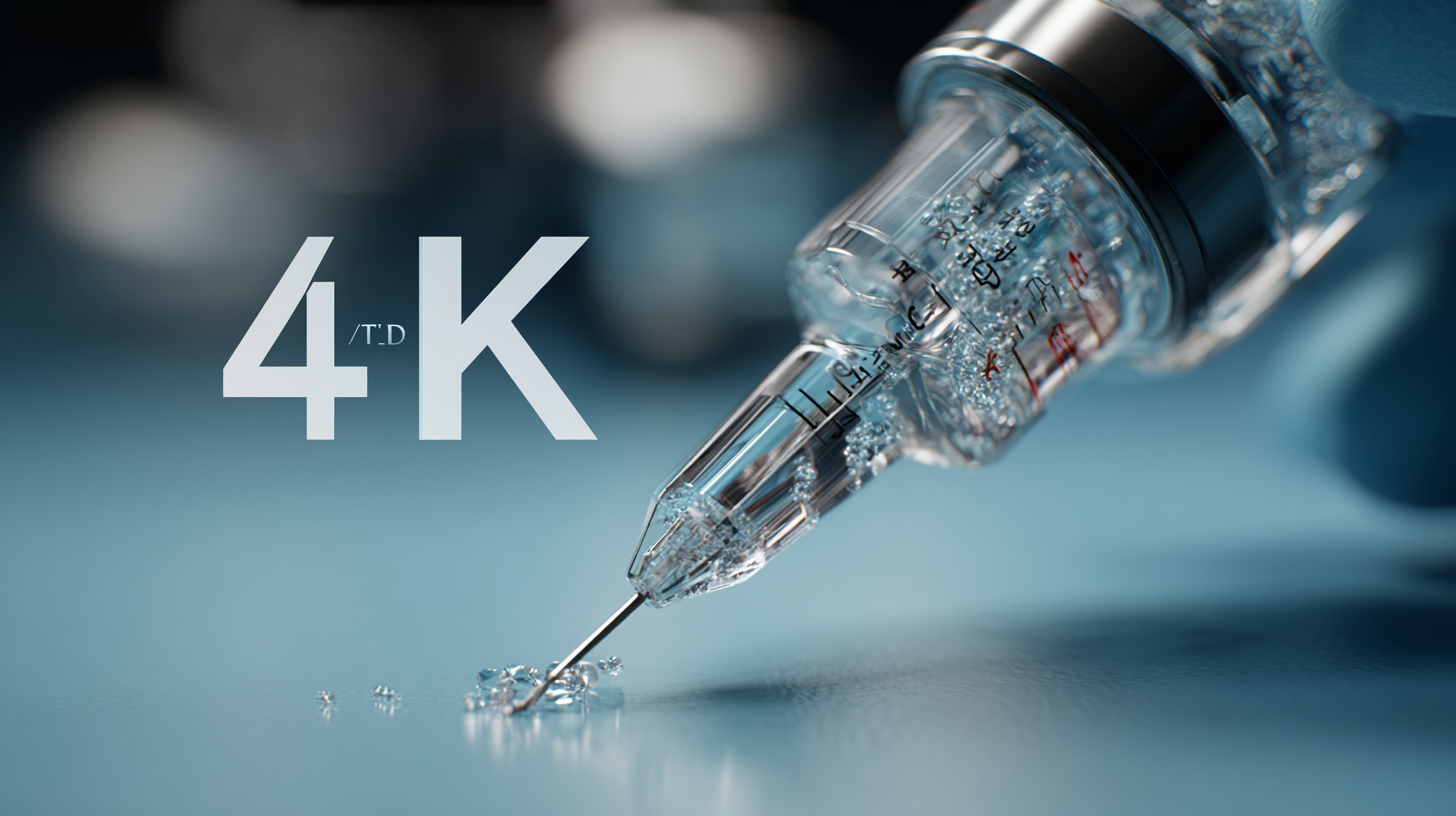Comprehensive Solutions for Optimal Catheter Accessory Efficiency
In the rapidly evolving healthcare landscape, the efficiency of Catheter Accessories is paramount for improving patient outcomes and streamlining medical procedures. According to a recent market analysis, the global catheter accessories market is projected to reach USD 8.4 billion by 2025, with a CAGR of 10.5%, underscoring the increasing reliance on advanced medical devices. As a representative of excellence in Chinese manufacturing, the country is not only a leader in the production of catheter accessories but also boasts significant export capabilities that drive innovation and accessibility in this vital sector. By focusing on comprehensive solutions that enhance the functionality and reliability of catheter accessories, manufacturers can ensure optimal performance, meeting the rising demands of healthcare providers and patients alike.
The Importance of Import and Export Certifications in Catheter Accessory Manufacturing
 Import and export certifications play a crucial role in the manufacturing of catheter accessories, ensuring compliance with international standards and regulations. These certifications not only facilitate market entry, but also enhance the credibility of manufacturers in the global healthcare landscape. By adhering to stringent quality control measures, manufacturers can assure healthcare providers and patients about the safety and efficacy of their products.
Import and export certifications play a crucial role in the manufacturing of catheter accessories, ensuring compliance with international standards and regulations. These certifications not only facilitate market entry, but also enhance the credibility of manufacturers in the global healthcare landscape. By adhering to stringent quality control measures, manufacturers can assure healthcare providers and patients about the safety and efficacy of their products.
Tip: When selecting a catheter accessory manufacturer, always verify their certification status. Certifications such as ISO 13485 for medical devices indicate adherence to high-quality management systems, which can significantly impact product reliability.
Furthermore, possessing the right certifications helps manufacturers mitigate risks associated with cross-border trade. Non-compliance can result in delays, fines, or even bans from selling in certain markets. Thus, conducting thorough documentation and maintaining updated certifications should be a priority for manufacturers looking to expand their reach.
Tip: Regularly auditing your production processes can help you stay aligned with certification requirements. Implementing an internal audit system ensures continuous quality improvement and readiness for external inspections.
Key Steps for Navigating Import and Export Regulations Successfully
Navigating the complex landscape of import and export regulations is crucial for companies dealing in catheter accessory efficiency. Recent industry reports indicate that understanding these regulations can significantly impact market entry strategies, with non-compliance potentially leading to fines up to 20% of the product value. According to a 2023 study by the Global Trade Compliance Association, 75% of companies experience delays in their supply chains due to regulatory hurdles, emphasizing the need for thorough knowledge and proactive strategies.
To successfully navigate these regulations, companies should focus on key steps: first, conducting a comprehensive analysis of the regulatory environment in target markets; second, establishing relationships with local compliance experts who understand the specific requirements. Additionally, investing in software solutions that assist in tracking compliance and documenting processes can enhance efficiency, reducing the time spent on these critical tasks. A report by the International Trade Administration suggests that companies that leverage technology for compliance see a 30% reduction in regulatory-related delays. By prioritizing these strategies, businesses can enhance their operational efficiency and maintain a competitive edge in the catheter accessory market.
Best Practices for Ensuring Quality in Catheter Accessory Production
In the ever-evolving field of catheter accessory production, ensuring quality is paramount for safety and efficiency. Adopting best practices can greatly enhance the manufacturing process, leading to improved patient outcomes and reduced operational costs. By implementing robust quality management systems and adhering to industry standards, manufacturers can maintain high levels of consistency in their products.
One effective tip is to invest in regular training for your production team. Knowledgeable and well-trained staff can identify potential quality issues early on, thus minimizing defects and ensuring that the final products meet all necessary specifications. Additionally, fostering a culture of continuous improvement encourages team members to seek innovative solutions and share best practices, further elevating the production standards.
Another critical element is the utilization of advanced technologies for quality control. Incorporating automated inspection tools, such as vision systems, can significantly enhance the detection of anomalies during the production process. These technologies not only increase efficiency but also provide valuable data, enabling manufacturers to make informed decisions and reduce the likelihood of errors, ultimately ensuring that their catheter accessories are of the highest quality.
How to Optimize Efficiency Through Effective Supply Chain Management
In the healthcare sector, effective supply chain management is crucial for enhancing the efficiency of catheter accessory operations. To optimize this efficiency, it is essential to streamline procurement processes, minimize delays, and ensure a steady supply of high-quality materials. Leveraging real-time data analytics can help organizations accurately forecast demand and adjust inventory levels accordingly, thereby reducing wastage and ensuring that catheter accessories are available whenever needed. This proactive approach not only boosts operational efficiency but also enhances patient care by ensuring that clinicians have the necessary tools at their disposal.

Moreover, collaboration across the supply chain can lead to substantial improvements in the workflow. By establishing strong partnerships with suppliers, healthcare facilities can negotiate better terms, access innovative products, and respond swiftly to changes in market demands. Implementing integrated supply chain technologies, such as automated ordering systems and inventory management platforms, further empowers healthcare providers to optimize their processes. By focusing on these strategies, organizations can ensure they are not only meeting the needs of healthcare professionals but also enhancing the overall efficiency of catheter accessory distribution.
Emerging Trends in the Catheter Accessory Industry and Their Impact on Compliance
The catheter accessory industry is witnessing a transformative shift driven by technological advancements and increasing compliance demands. As healthcare providers strive for improved patient outcomes, the emergence of smart catheter accessories has become a prominent trend. These devices integrate real-time monitoring capabilities, allowing for prompt adjustments and enhanced patient safety. By harnessing data analytics, clinicians can proactively manage patient conditions, reducing the risk of complications associated with catheter usage.
Additionally, the focus on regulatory compliance is shaping product development within the industry. Manufacturers are investing in innovative designs that not only meet stringent regulatory requirements but also enhance user experience. This includes the creation of intuitive, easy-to-use accessories that facilitate proper application and maintenance, ultimately leading to better compliance rates among healthcare professionals. As these trends gain momentum, the potential for improved functionality and safety reinforces the importance of staying abreast of emerging developments in the catheter accessory market.
Trends in Catheter Accessory Efficiency
This chart displays the emerging trends in the catheter accessory industry, highlighting key dimensions that impact overall efficiency and compliance. Each bar represents the perceived effectiveness of each factor on a scale of 1 to 10.